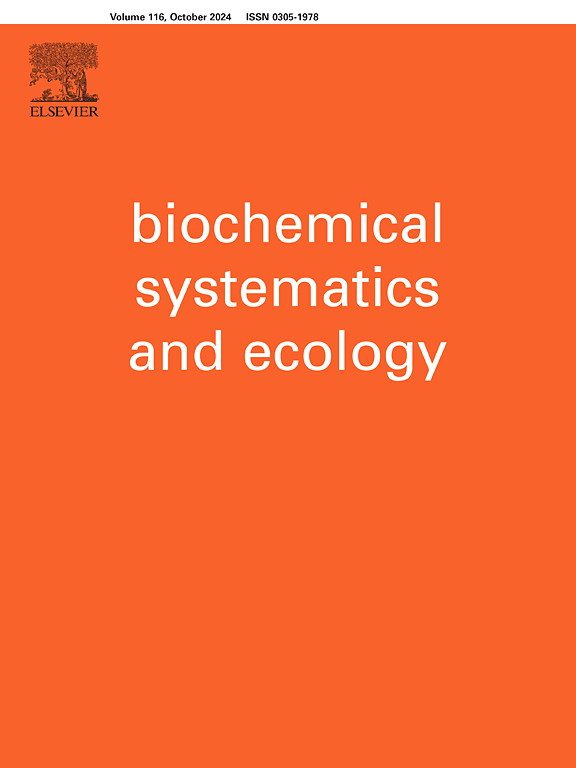Chemical constituents from Albatrellus confluence and their chemotaxonomic significance
IF 1.4
4区 生物学
Q4 BIOCHEMISTRY & MOLECULAR BIOLOGY
引用次数: 0
Abstract
The phytochemical study of the fruiting bodies of Albatrellus confluens afforded a new natural product methyl 2-hydroxyimino-3- phenylpropionate (1), as well as 14 known compounds: phenylalanine (2), zarzissine (3), uridine (4), emeheterone (5), uracil (6), nicotinamide (7), adenosine (8)), methyl 4-hydroxyphenylacetate (9), grifolin (10), neogrifolin (11), grifolin methyl ether (12), 4-O-methyl grifolin acid (13), confluentin (14), albatrelin G (15). The structures of these compounds were deduced using spectroscopic methods, including IR, MS, 1D and 2D NMR, as well as by comparisons with data reported in the literature. Furthermore, the chemotaxonomic significance of the isolates was also discussed.
Albatrellus 汇合处的化学成分及其化学分类学意义
对 Albatrellus confluens 子实体的植物化学研究发现了一种新的天然产物 2-hydroxyimino-3- phenylpropionate 甲酯(1),以及 14 种已知化合物:苯丙氨酸(2)、zarzissine(3)、尿苷(4)、emheterone(5)、尿嘧啶(6)、烟酰胺(7)、腺苷(8))、4-羟基苯乙酸甲酯(9)、grifolin(10)、neogrifolin(11)、grifolin 甲醚(12)、4-O-甲基 grifolin 酸(13)、confluentin(14)、albatrelin G(15)。利用红外光谱、质谱、一维和二维核磁共振等光谱方法以及与文献报道的数据进行比较,推断出了这些化合物的结构。此外,还讨论了分离物的化学分类学意义。
本文章由计算机程序翻译,如有差异,请以英文原文为准。
求助全文
约1分钟内获得全文
求助全文
来源期刊

Biochemical Systematics and Ecology
生物-进化生物学
CiteScore
3.00
自引率
12.50%
发文量
147
审稿时长
43 days
期刊介绍:
Biochemical Systematics and Ecology is devoted to the publication of original papers and reviews, both submitted and invited, in two subject areas: I) the application of biochemistry to problems relating to systematic biology of organisms (biochemical systematics); II) the role of biochemistry in interactions between organisms or between an organism and its environment (biochemical ecology).
In the Biochemical Systematics subject area, comparative studies of the distribution of (secondary) metabolites within a wider taxon (e.g. genus or family) are welcome. Comparative studies, encompassing multiple accessions of each of the taxa within their distribution are particularly encouraged. Welcome are also studies combining classical chemosystematic studies (such as comparative HPLC-MS or GC-MS investigations) with (macro-) molecular phylogenetic studies. Studies that involve the comparative use of compounds to help differentiate among species such as adulterants or substitutes that illustrate the applied use of chemosystematics are welcome. In contrast, studies solely employing macromolecular phylogenetic techniques (gene sequences, RAPD studies etc.) will be considered out of scope. Discouraged are manuscripts that report known or new compounds from a single source taxon without addressing a systematic hypothesis. Also considered out of scope are studies using outdated and hard to reproduce macromolecular techniques such as RAPDs in combination with standard chemosystematic techniques such as GC-FID and GC-MS.
 求助内容:
求助内容: 应助结果提醒方式:
应助结果提醒方式:


